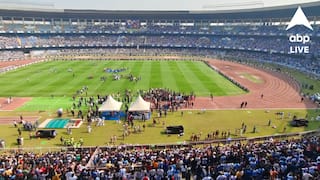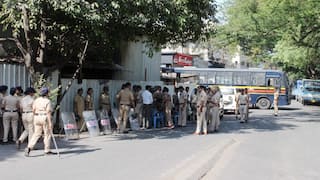Jumping And Deadlifting In Space May Help Astronauts Fight Bone Loss: Study
Astronaut Bone Loss: Astronauts face a unique set of stressors during spaceflight, including microgravity, isolation, confinement, and environmental and operational hazards, that have negative impacts

Astronauts who have come back to Earth after staying in space for more than three months may show incomplete bone recovery even after spending one year on Earth since their return, a new study has found. However, if astronauts perform more resistance-based exercises during spaceflight, their bone loss may be reduced.
A team of researchers recently performed a study on 17 international astronauts and found that the sustained bone losses after one year are equivalent to ten years of normal age-related bone loss on Earth. The study also found that the shinbone partially recovers. The findings were recently published in the journal Scientific Reports.
Stressors Faced By Astronauts During Spaceflight
Astronauts face a unique set of stressors during spaceflight, including microgravity, isolation, confinement, and environmental and operational hazards. These factors can have a detrimental effect on sleep, alertness, and neurobehavioural performance, all of which are critical to mission success, the study said. In the paper, the study authors predicted neurobehavioural performance over the course of a six-month mission aboard the International Space Station (ISS) using ISS environmental data and self-reported and cognitive data collected longitudinally from 24 astronauts.
How Was Astronauts’ Neurobehavioural Performance Assessed?
The researchers assessed neurobehavioural performance repeatedly using a three-minute Psychomotor Vigilance Test (PVT-B) which is highly sensitive to the effects of sleep deprivation. A PVT objectively assessed fatigue-related changes in alertness associated with sleep loss, extended wakefulness, misalignment of the circadian cycle, and time required to complete a task, according to the United States National Institutes of Health (NIH).
As Many As 17 Astronauts Analysed
According to the study, Steven Boyd and his colleagues imaged 17 astronauts before spaceflight, at return to Earth, and after six and 12 months of recovery. As many as 14 male and three female astronauts were analysed.
Fracture Load, Bone Mineral, Tissue Thickness Calculated Before And After Spaceflight
The researchers conducted bone scans on the tibia (shinbone) and radius (forearm) to calculate the resistance of the bone to fracture. This is known as fracture load. The amount of bone mineral in the bone tissue, and tissue thickness were also calculated.
Different Exercises Completed By Astronauts Recorded
The scientists also recorded exercises such as cycling, treadmill running and deadlifting completed by astronauts during spaceflight and post-flight.
Important Findings Of The Study
The median results for 16 astronauts, a year after spaceflight, showed incomplete recovery of the tibia. The median determines the middle value of a dataset in ascending order. The median shinbone failure load was indicative of bone strength. The study found that the median shinbone failure load was reduced by 152 newtons from 10,579 newtons at pre-flight to 10,427 newtons after one year.
Compared to pre-flight levels of 326.8 milligrams per cubic centimetre, total bone mineral density reduced by 4.5 milligrams per cubic centimetre.
The researchers also compared the measures of the forearm across all astronauts at pre-flight and at 12 months' recovery, but observed no change in the values for each astronaut.
The astronauts who completed greater amounts of in-flight deadlift training, relative to their individual training pre-flight, were identified as part of those who recovered tibia bone mineral density, the study said. The authors noted that a jumping resistance-based exercise that provides high-impact dynamic loads on the legs may help prevent bone loss and promote the formation of bone on spaceflight missions.
A total of eight astronauts, who had been on a mission longer than six months, showed substantially less bone recovery. For astronauts on missions over six months, median shinbone failure load, which is the resistance of the bone to fracture, was reduced by 333.9 newtons after one year compared to pre-flight. As many as nine astronauts were on missions shorter than six months. The failure load in these astronauts was reduced by 79.9 newtons after one year compared to pre-flight.
The study found similar differences for total bone mineral density in the shinbone. A total of nine astronauts, seven of whom were from long missions, did not fully recover shinbone total bone mineral density after 12 months, the study said.







































